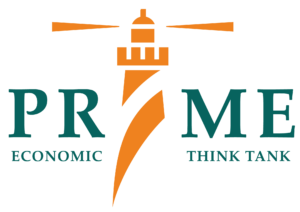
The government provided financial support of Rs. 1.93 trillion to SOEs during FY 2019-22 to keep them operational. The power sector posted a loss of Rs. 321 billion, while the infrastructure, transport, and communication sector posted a loss of Rs. 295 billion.
PRIME has published its quarterly assessment report, Prime Plus April 2024, which analyzes the financial performance of State-Owned Enterprises (SOEs) in Pakistan. The report evaluated the financial performance of SOEs and the private firms operating in the oil and gas marketing sector, banking sector, steel sector, and power generation sector.
The Power Sector and Infrastructure, Transport and Communication (ITC) Sector were the major contributors to the overall loss, incurring losses of Rs. 321 billion and Rs. 295 billion, respectively, during the fiscal year 2022. On the loss-making side, seven out of the ten largest loss-making SOEs are DISCOs, while the remaining three entities belong to the ITC sector. The combined losses of DISCOs amounted to Rs. 375.81 billion in FY 2022 alone. Pakistan Steel Mills incurred a loss of Rs. 206 billion from 2019 to 2022. In contrast, the Oil and Gas sector, a highly regulated sector, stands out as the most profitable segment within the SOE portfolio.
The report highlights vulnerability to external shocks emanating from wars. The continuity of the Russia-Ukraine war and unbated Gaza genocide may promote uncertainty throughout the world. These wars have affected trade in the Mediterranean Sea, which could result in disrupting the supply chain. Externally, the financial obligations due to debt and imports will keep the exchange rate under stress as the foreign exchange reserves are merely sufficient for two months’ imports. It is pertinent to highlight that a market-based exchange rate is the only way to promote economic sustainability.
Domestically, public finance is under pressure due to higher expenditures and lower revenue collection. FBR collected Rs. 2,241 billion in the third quarter of FY 2024. During the first nine months of FY 2024 (July-March), FBR collected Rs. 6.710 trillion, beating the Rs. 6.707 trillion target by Rs. 3 billion. Compared to revenues, the total government expenditure increased by 49 percent to Rs. 7,532 billion against Rs. 5,058 billion in the first seven months of FY 2023.
In the third quarter of FY 2024, total government borrowing increased by Rs. 2,490 billion compared to an increase of Rs. 1,959 billion last year. At the end of the third quarter of FY 2024, total government borrowing was cloaked at Rs. 28.2 trillion. The government borrowing from the scheduled banks increased by Rs. 1,405 billion in the third quarter of FY 2024. The central government’s total debt stood at Rs. 64.8 trillion, out of which domestic debt is Rs. 42.7 trillion and external debt is Rs. 22.1 trillion.
Inflation remains a challenge for the government. People face continuous declines in their purchasing power. In the third quarter of FY 2024, the average CPI inflation stood at 24 percent compared to 31.5 percent in FY 2023. The inflation in the first nine months of FY 2024 stood at 27.06 percent. The underlying cause of inflation is the higher growth in the money supply compared to the growth in the supply of goods.
The government needs to ensure efficient allocation of resources and reevaluate its spending patterns. The government cannot continue to support loss-making SOEs and should prioritize the privatization of the highest loss-making enterprises. An increase in revenue generation has been observed, but the government should refrain from increasing tax rates and focus on broadening the tax base. This could be accomplished through a flat, low-rate, and broad-based taxation system.
The report is available on PRIME’s website and can be accessed by clicking here
For further information, contact our communications officer Mr. Farhan Zahid at farhan@primeinstitute.org or call +92 331 522 6825.
